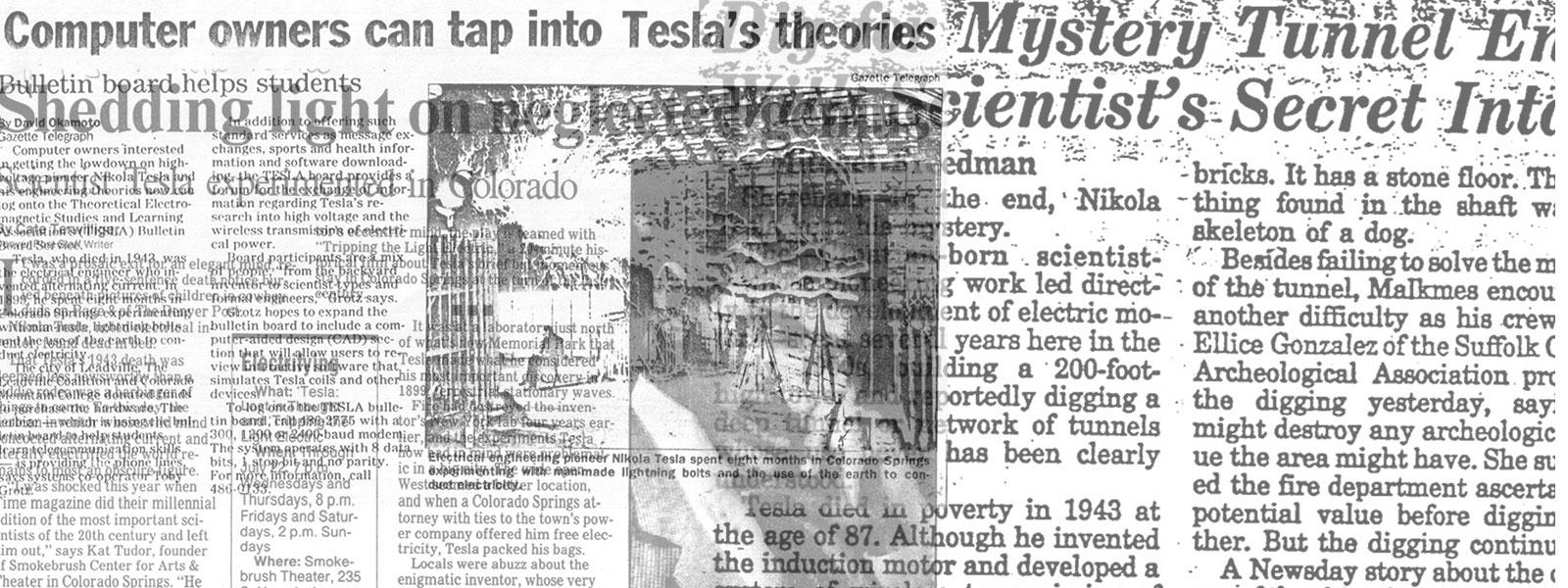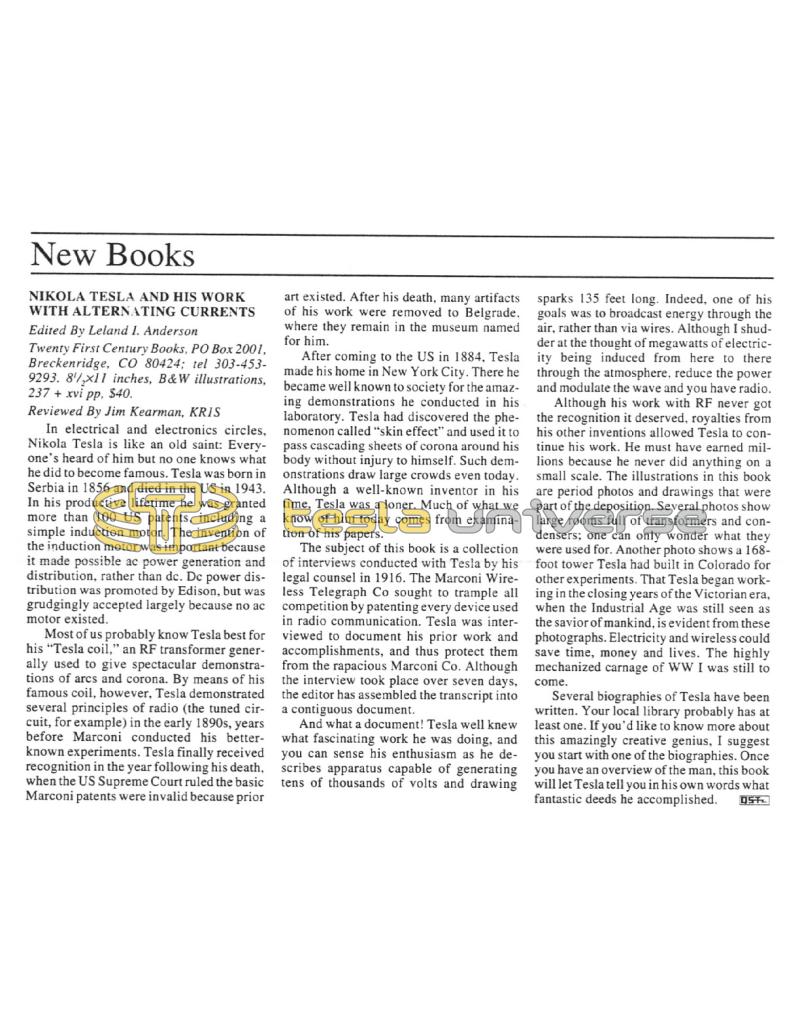
Nikola Tesla Articles
New Books - Nikola Tesla and His Work with Alternating Currents
Edited By Leland I. Anderson
Twenty First Century Books, PO Box 2001, Breckenridge, CO 80424; tel 303-453-9293. 8½ x 11 inches, B & W illustrations, 237 + xvi pp, $40.
Reviewed By Jim Kearman, KRIS
In electrical and electronics circles, Nikola Tesla is like an old saint: Everyone’s heard of him but no one knows what he did to become famous. Tesla was born in Serbia in 1856 and died in the US in 1943. In his productive lifetime he was granted more than 100 US patents, including a simple induction motor. The invention of the induction motor was important because it made possible ac power generation and distribution, rather than dc. Dc power distribution was promoted by Edison, but was grudgingly accepted largely because no ac motor existed.
Most of us probably know Tesla best for his “Tesla coil,” an RF transformer generally used to give spectacular demonstrations of arcs and corona. By means of his famous coil, however, Tesla demonstrated several principles of radio (the tuned circuit, for example) in the early 1890s, years before Marconi conducted his better-known experiments. Tesla finally received recognition in the year following his death, when the US Supreme Court ruled the basic Marconi patents were invalid because prior art existed. After his death, many artifacts of his work were removed to Belgrade, where they remain in the museum named for him.
After coming to the US in 1884, Tesla made his home in New York City. There he became well known to society for the amazing demonstrations he conducted in his laboratory. Tesla had discovered the phenomenon called “skin effect” and used it to pass cascading sheets of corona around his body without injury to himself. Such demonstrations draw large crowds even today. Although a well-known inventor in his time, Tesla was a loner. Much of what we know of him today comes from examination of his papers.
The subject of this book is a collection of interviews conducted with Tesla by his legal counsel in 1916. The Marconi Wireless Telegraph Co sought to trample all competition by patenting every device used in radio communication. Tesla was interviewed to document his prior work and accomplishments, and thus protect them from the rapacious Marconi Co. Although the interview took place over seven days, the editor has assembled the transcript into a contiguous document.
And what a document! Tesla well knew what fascinating work he was doing, and you can sense his enthusiasm as he describes apparatus capable of generating tens of thousands of volts and drawing sparks 135 feet long. Indeed, one of his goals was to broadcast energy through the air, rather than via wires. Although I shudder at the thought of megawatts of electricity being induced from here to there through the atmosphere, reduce the power and modulate the wave and you have radio.
Although his work with RF never got the recognition it deserved, royalties from his other inventions allowed Tesla to continue his work. He must have earned millions because he never did anything on a small scale. The illustrations in this book are period photos and drawings that were part of the deposition. Several photos show large rooms full of transformers and condensers; one can only wonder what they were used for. Another photo shows a 168-foot tower Tesla had built in Colorado for other experiments. That Tesla began working in the closing years of the Victorian era, when the Industrial Age was still seen as the savior of mankind, is evident from these photographs. Electricity and wireless could save time, money and lives. The highly mechanized carnage of WW I was still to come.
Several biographies of Tesla have been written. Your local library probably has at least one. If you’d like to know more about this amazingly creative genius, I suggest you start with one of the biographies. Once you have an overview of the man, this book will let Tesla tell you in his own words what fantastic deeds he accomplished.
